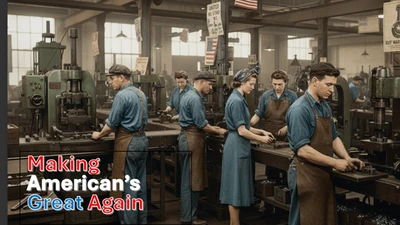I’ve always believed that markets thrive when innovation is driven by free enterprise, not government interference. So, when the news broke that the U.S. government had taken a 9.9% stake in Intel Corp.—part of an $11.1 billion Chips Act “investment”—my first thought wasn’t applause. It was concern. But it soon turned to future promise.
On the surface, Washington and President Trump will sell this as a patriotic move: securing America’s semiconductor future, ensuring national security, and standing up to China’s dominance in chipmaking. And to be fair, there are clear motivations behind the deal:
- Strategic Leverage Against China: Chips power everything—AI, weapons, communications. By buying into Intel, the U.S. signals it won’t let Beijing or Taipei hold America hostage over supply chains.
- Political Messaging: Trump can showcase this as a “Made in America” victory, proving his administration is serious about jobs and manufacturing staying on U.S. soil.
- Control Over Corporate Decisions: Washington now has leverage over where Intel builds fabs, which markets it serves, and what contracts it prioritizes. That’s influence that goes well beyond subsidies.
- Legacy and Precedent: For Trump, this move sets a new model—state-backed capitalism under an America-first banner. Today it’s Intel; tomorrow it could be other “critical” industries.
- Free Money to Future Value: Trump did what every business man would do, he converted a grant of billions to an investment worth more.
But here’s the problem: when government becomes part-owner of a private enterprise, it changes the DNA of the company. Enter the “what if’s”. Will Intel’s leadership make decisions based on market efficiency and shareholder value—or based on political marching orders from Washington? I don’t know. Instead of bold R&D bets, we could see Intel bogged down by bureaucracy and government-driven quotas. But, I don’t think that will happen.
There’s also the matter of dilution. Everyday shareholders get pushed down the ladder when Washington writes itself in. And once taxpayer money flows, natural market discipline erodes. Subsidies breed complacency, and complacency in the chip race is dangerous. But that’s happens with any large investor when a company needs additional capital taken as equity.
More broadly, this is the first real test of whether America’s industrial future will be driven by private innovation—or by government sitting at the shareholder table. Once Uncle Sam owns part of Intel, it sets a precedent that’s hard to roll back. But, this has always been a fear since large grants and guarantees from the government come with strings attached.
I’m not against America leading in semiconductors—we absolutely must. But leadership comes from investor confidence and free-market innovation, not from Washington inserting itself into boardrooms. As investors, we should keep a cautious eye on this deal. The future may hold a new model for America, actually getting a return from the billions of dollars American’s hand to corporate America.










